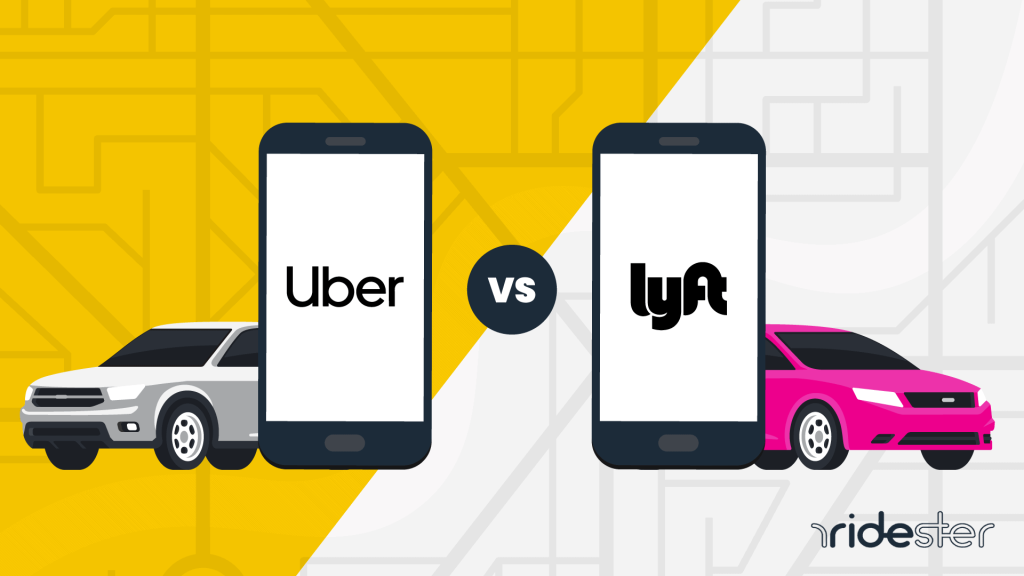When it comes to ridesharing, two names dominate the market: Lyft and Uber. Both companies have transformed urban transportation, offering millions of rides daily. But many riders ask: Which is safer — Lyft or Uber?
The answer depends on factors like safety features, driver screening, insurance policies, and real-world rider experiences. This guide compares Lyft and Uber side by side so you can make an informed choice the next time you book a ride.
Safety Features: Lyft vs. Uber
Both Lyft and Uber have invested heavily in rider and driver safety. Let’s break down their key safety features.
Uber Safety Features
- In-App Emergency Button – Directly calls 911 with location details.
- RideCheck Technology – Detects unexpected stops or collisions.
- Driver Background Checks – Annual screenings plus continuous monitoring.
- Trip Sharing – Riders can share trip details in real-time.
- Mask Verification (COVID Era) – Required drivers to upload selfies wearing masks.
Lyft Safety Features
- Emergency Help Button – Connects riders and drivers to 911 with GPS info.
- Smart Trip Check-In – Detects unexpected ride delays.
- Continuous Background Checks – Drivers re-screened regularly.
- Share Location – Riders can share route and ETA with contacts.
- Driver Identity Verification – Periodic selfie checks to prevent fraud.
Verdict: Both platforms offer similar safety tools, but Uber has an edge with RideCheck technology, which automatically detects unusual ride activity.
Driver Screening and Background Checks
Uber Driver Screening
- Criminal background check.
- Motor vehicle record review.
- Ongoing monitoring for new offenses.
Lyft Driver Screening
- National and county criminal background check.
- DMV driving history review.
- Continuous checks for red flags.
Verdict: Both companies use third-party background checks and ongoing monitoring. Neither is significantly safer here — they follow nearly identical processes.
Insurance Coverage: Lyft vs. Uber
Both Uber and Lyft provide $1 million liability insurance during rides. Coverage depends on whether the app is on, waiting for a request, or transporting a passenger.
- Period 1 (App On, Waiting for Ride): Limited liability coverage.
- Period 2 (Ride Accepted, En Route to Pickup): Full coverage applies.
- Period 3 (Passenger in Car): $1 million liability, plus uninsured motorist coverage.
Verdict: Insurance protection is nearly identical for both services.
Safety Statistics: Lyft vs. Uber
- Uber: Published safety reports show 99.9% of rides end without safety incidents. However, its size (larger global reach) means more total incidents.
- Lyft: Fewer total incidents reported, largely due to operating in fewer markets than Uber.
Statistically, both have rare but notable safety incidents, often linked to human behavior rather than company systems.
Rider and Driver Experiences
- Uber: More widely available, especially in international markets. Some riders report issues with driver behavior or surge pricing.
- Lyft: Generally seen as friendlier and community-focused, though availability is more limited.
Both apps have high ratings systems where poor-performing drivers (or riders) can be removed from the platform.
Safety Tips for Using Lyft or Uber
Regardless of which service you choose, here are tips to stay safe:
- Verify Driver & Car – Check license plate, driver photo, and car model.
- Share Your Trip – Use the in-app sharing feature with a trusted friend.
- Wait in Safe Locations – Stay indoors or in well-lit areas until your car arrives.
- Sit in the Back Seat – Provides personal space and easier exit if needed.
- Trust Your Instincts – Cancel if you feel uncomfortable.
Which is safer: Lyft or Uber?
When comparing both:
- Safety Features: Uber slightly ahead with RideCheck.
- Background Checks: Nearly identical.
- Insurance Policies: Same coverage.
- User Experiences: Lyft often praised for friendliness, Uber for availability.
Final Verdict: Both Lyft and Uber are generally safe when used correctly. Uber may edge out slightly in tech-based safety features, while Lyft offers a smaller, more community-oriented experience.
Conclusion
When asking “Which is safer, Lyft or Uber?”, the truth is both companies offer strong safety measures, regular driver screenings, and reliable insurance coverage.
Uber’s advanced RideCheck technology gives it a slight safety edge, while Lyft’s smaller network often feels more personal and community-focused. Ultimately, your safety depends as much on personal awareness as on the platform itself.
By using in-app tools, sharing rides, and following safe riding practices, you can enjoy a secure experience with either service.
FAQs
1. Do Uber or Lyft have more safety incidents?
Uber reports more incidents overall, but this is due to having far more rides worldwide.
2. Which has better driver background checks?
Both companies use nearly identical third-party checks and ongoing monitoring.
3. Is Lyft or Uber safer for women?
Both platforms have introduced features like ride tracking and emergency buttons. Rider vigilance remains key.
4. Who offers better insurance coverage?
Both Uber and Lyft provide $1 million liability coverage during active rides.
5. Should I use Uber or Lyft when traveling abroad?
Uber is more widely available internationally, while Lyft operates mainly in North America.
Also read: Vision 2000 en Direct: Your Guide to Live Programming and Access




Leave a Comment